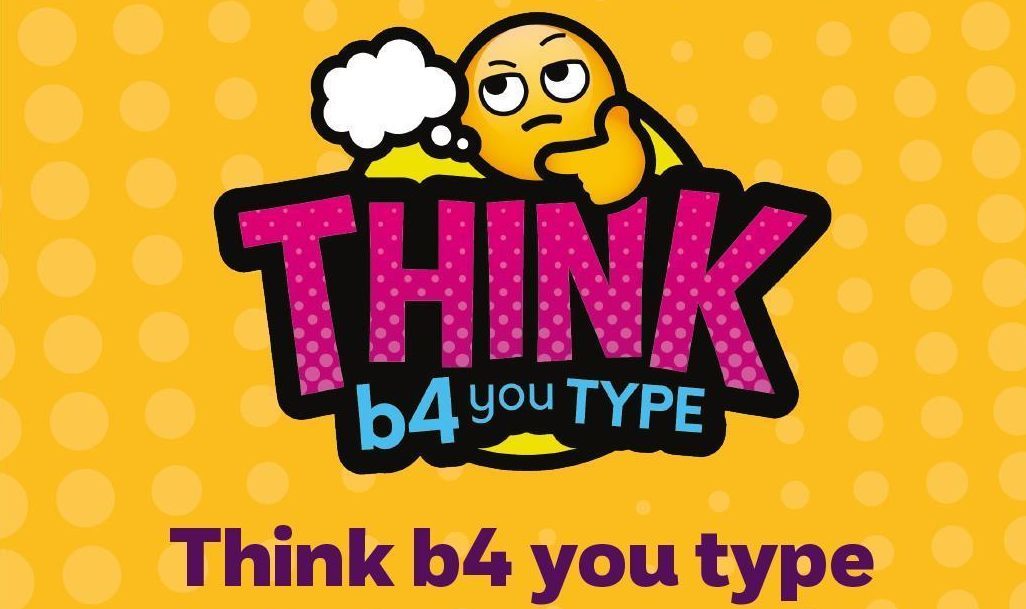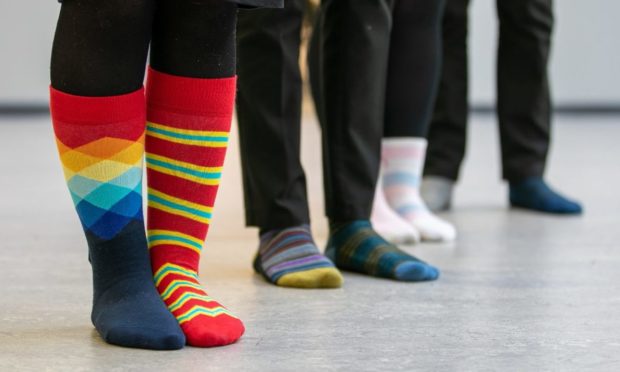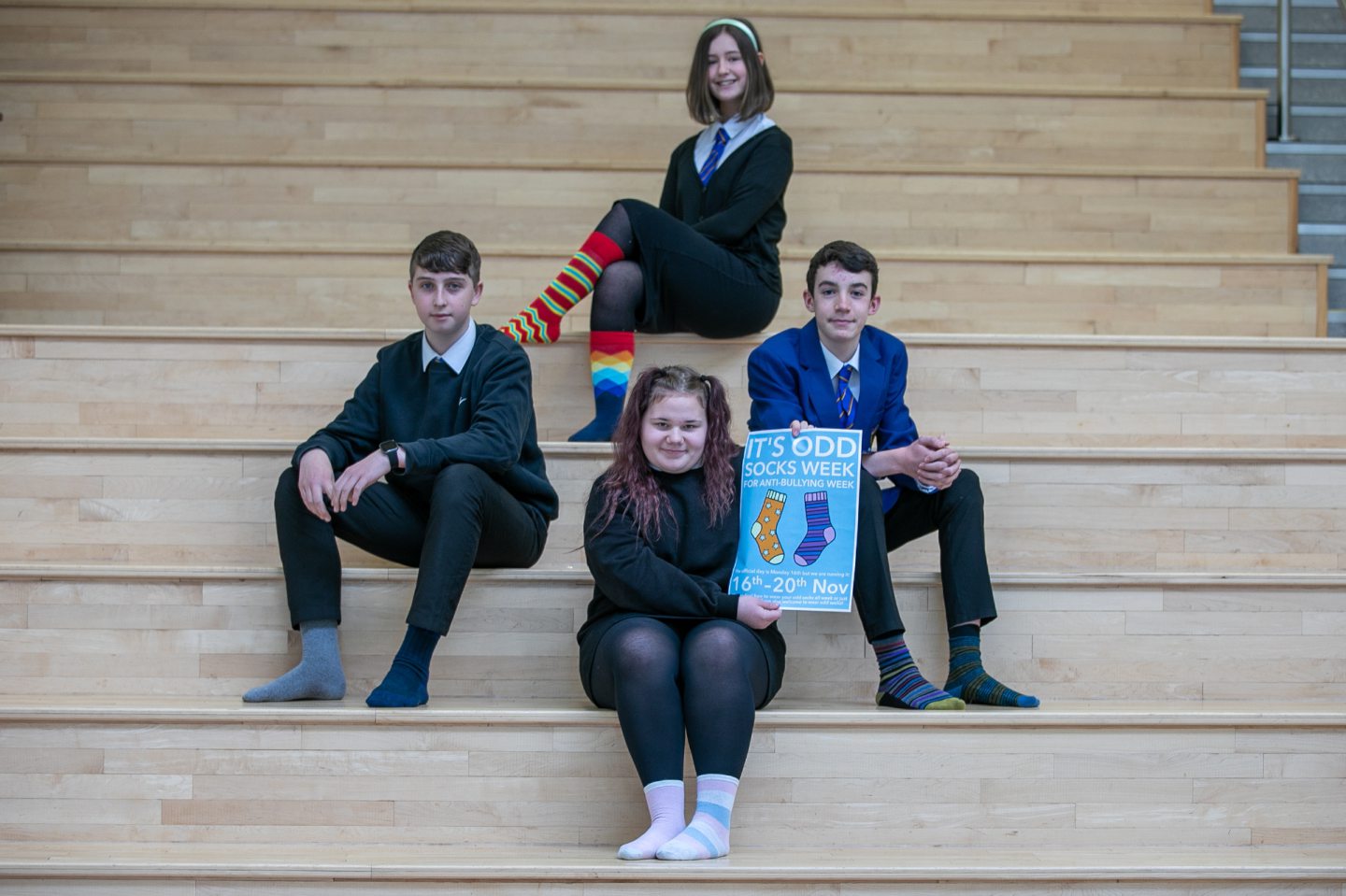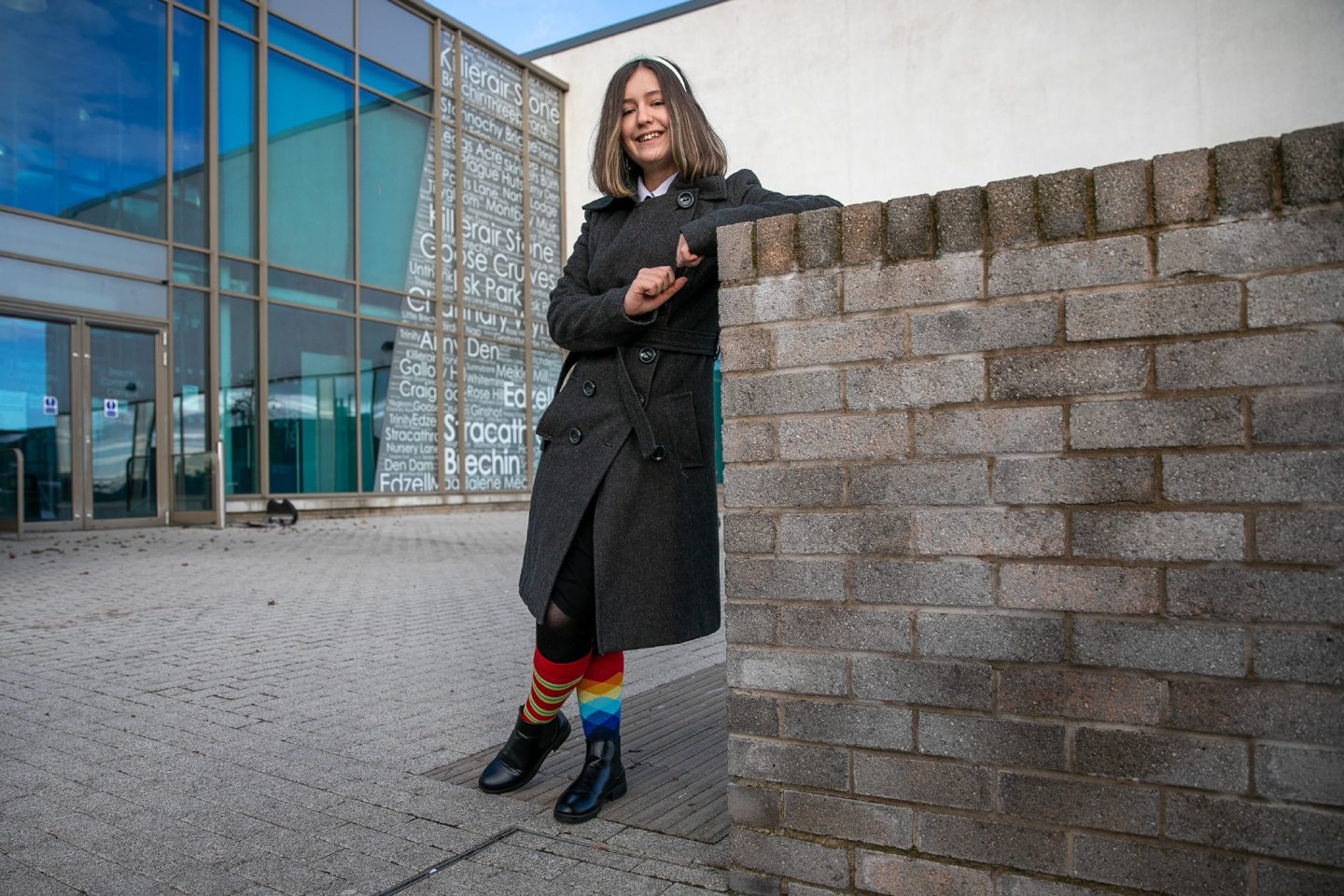Across the country young people are standing up to bullying during Anti-Bullying Week, including taking part in Odd Socks Day.
Nationwide, work to tackle the issue has been bolstered by a team of young people from Angus who developed the Think B4 You Type campaign with charities, the NSPCC and respectme.
This resulted in the launch last week of the Think B4 You Type toolkit, led by Brechin High School pupil Rachel Talbot, to help other areas and schools run their own youth-led anti-bullying drives.
In Brechin High School, Rachel, 13, and her peers have continued their work this week, spreading the message about the scourge of bullying, including recording a series of videos and wearing odd socks.
Fellow S3 pupil Thomas Jordan appears with Rachel in the footage, which he edited and produced and has been broadcast to classes throughout the school.
Impact on victims
Rachel, 13, was a victim of bullying at primary school and is determined to help prevent it happening to others.
She said it was a “huge” problem with a profound impact on victims.
She said: “People can go from being really happy and social to not wanting to go out.
“It takes away from people’s self-confidence. When you are being bullied it’s really lonely.”
The impact can be magnified when victims are targeted in person and on social media, she said.
“If people are getting bullied at school they might also be getting bullied online. That adds to it. They can’t really escape then.”
She’s proud of the work done by the Angus campaign group and fellow pupils.
She said: “It’s really cool, our group work really well together, and it’s good seeing loads of other people passionate about this cause.
“We’ve achieved a lot, not just in school but with the toolkit launch as well.”
Statistics
A survey by the Angus campaign found that 75% of young people in the area had seen someone bullied, 51% said that they had been bullied themselves and 7% said they had been involved in bullying others.
Of parents, 63% said they were most worried by online bullying, and 84% of school staff reported seeing bullying behaviour in schools.
What did they do?
Think B4 You Type was a year-long youth-led anti-bullying campaign launched in November 2018 by Angus Council with the charities respectme and NSPCC Scotland.

It recognised the prevalence of online bullying, and how it can affect young people 24-hours a day.
A report produced stressed that bullying can be devastating, affecting academic performance, school attendance and attainment and is linked to mental and physical health problems.
Two pupils from each of the Angus secondary schools formed a youth advisory committee, supported by the charities.
They came up with a series of recommendations designed to make people think about their behaviour and feel empowered to respond to online bullying, and to form to the basis for future action.
What are the recommendations?
Recommendations for schools to consider in their anti-bullying policies were presented to Angus Council and the Scottish Parliament, and led to changes to Angus Council’s anti-bullying policy.
They included:
- More training opportunities for parents, carer and teachers to ensure they understand bullying and can give appropriate advice;
- Anti-bullying work to better target primary aged children to help establish a positive culture early on;
- Once bullying incidents are reported, communication of the agreed action plan to resolve it should be seen as a priority;
- Young people should be supported to understand how their online behaviour can contribute to bullying;
- Work should be undertaken with young people who bully to understand their behaviour and support them to change it.
Angus Council children and learning convener Derek Wann said: “Members of the youth advisory group have been involved in promoting anti-bullying work in their schools, contributing to the NSPCC report, participating in judging NSPCC’s internal awards, as well as sharing their learning and being instrumental in the development of the national toolkit which will support other local authorities with developing their own campaigns.
“We are very proud of these young people and their work in leading our local anti-bullying campaign in Angus but also for its valuable legacy in promoting youth-led anti-bullying work nationally.”
What have victims experienced?
Each year hundreds of young people from across Scotland contact the NSPCC’s Childline service about bullying.
One 14-year-old girl told Childline: “I am being bullied by a girl at school. She has taken photos of me and posted them on Snapchat calling me fat and ugly and how I will never have a boyfriend.
“I have been having suicidal thoughts as this girl is really popular and she has turned my whole year against me.”
Another teenage girl told a counsellor: “Every day I wake up scared to go to school, scared about the comments people will make and scared about walking home.
“Then I get in and log onto my social networking site and there are horrible messages everywhere. It’s like there’s no escaping the bullies.
“I’m struggling to cope with how upset I feel so sometimes I cut myself just to have a release but it’s not enough. I can’t go on like this.”
Charity
At the toolkit launch, Carla Malseed, NSPCC Scotland’s campaigns manager, said: “All children who are affected by bullying can suffer harm – whether they are bullied, they bully others or they witness bullying – and the effects of bullying can last into adulthood.
“Our Childline counsellors talk to hundreds of children in Scotland about bullying each year. Many young people talk about it affecting their self-worth and feeling trapped and isolated.
“While this toolkit focuses on online bullying, it is important that this is looked at in the wider context of relationships, and that any campaign considers the link between online and offline bullying.”












